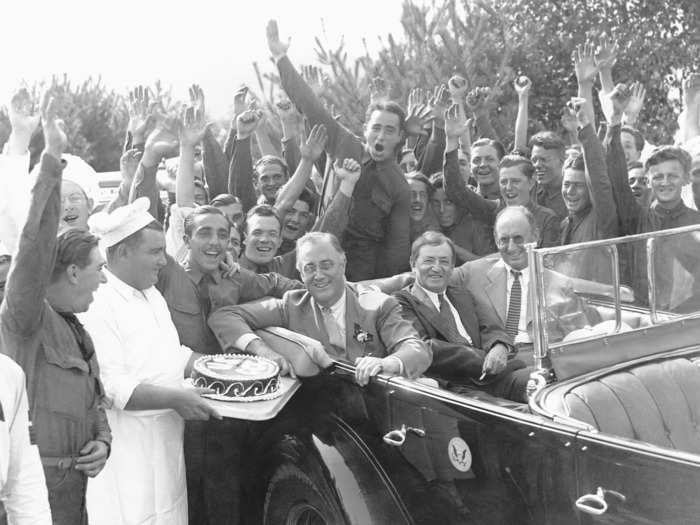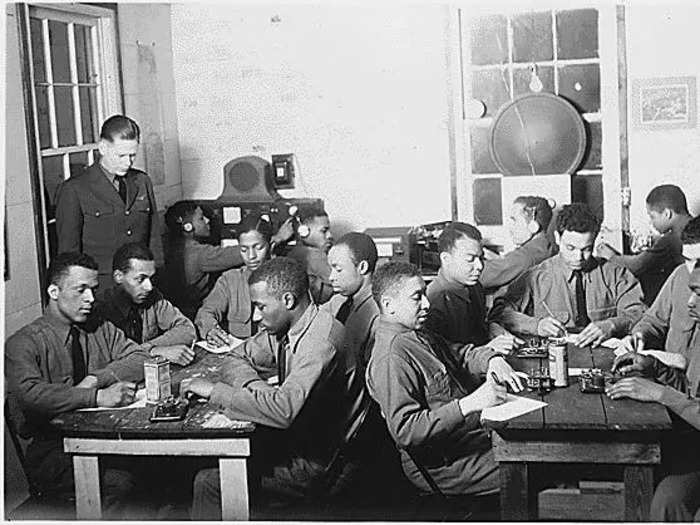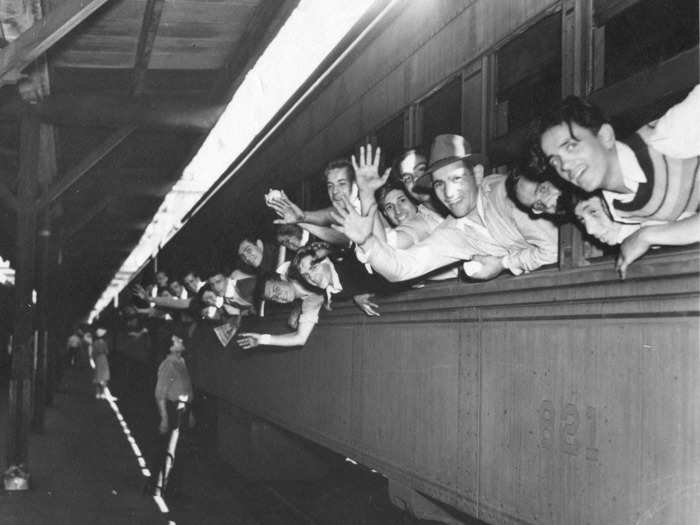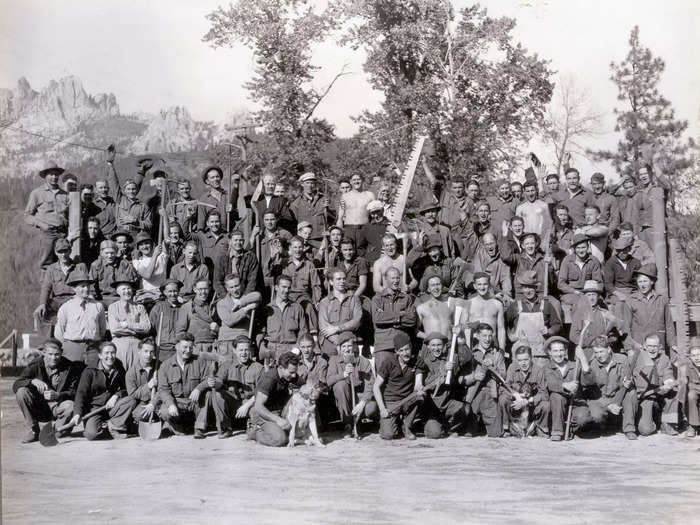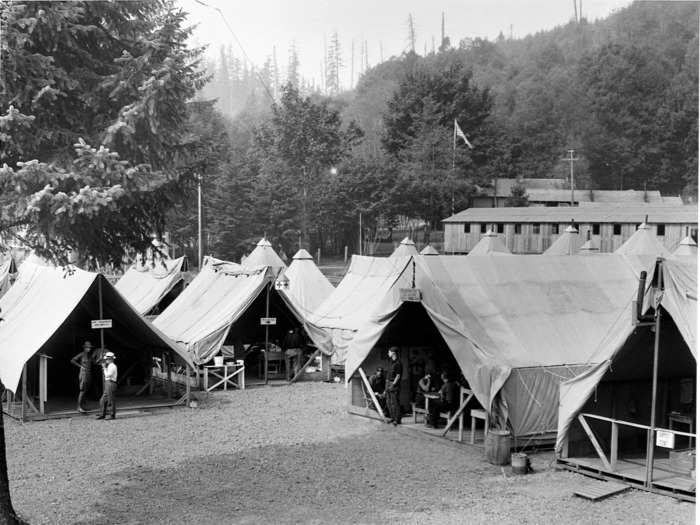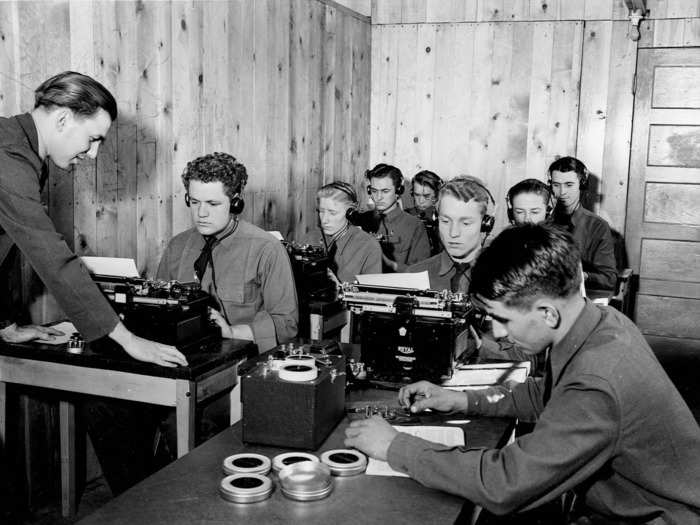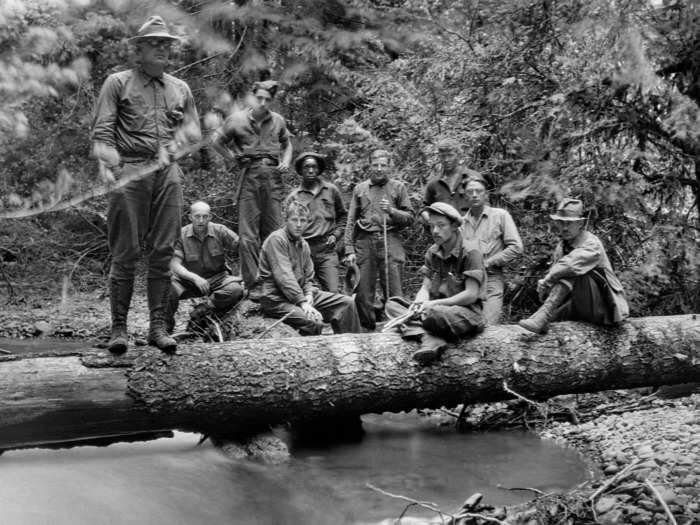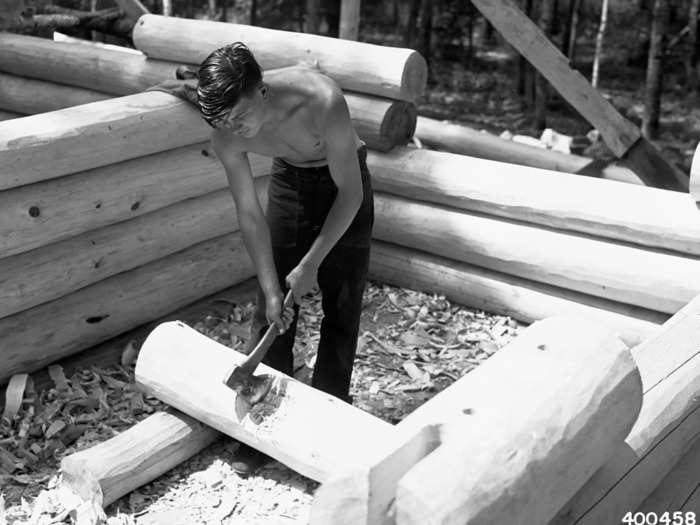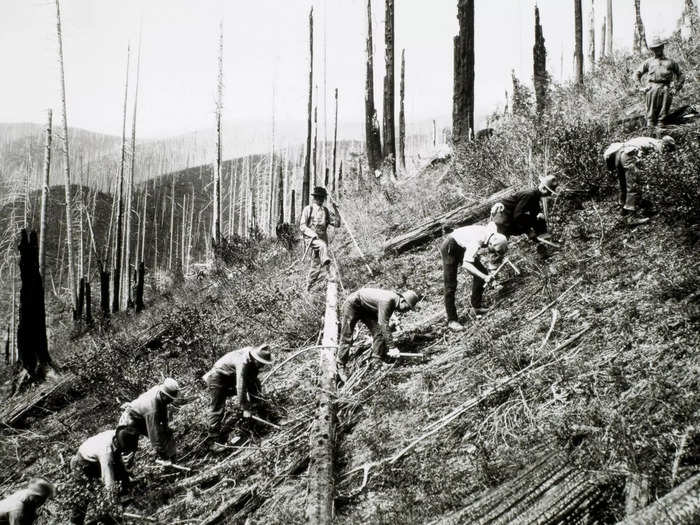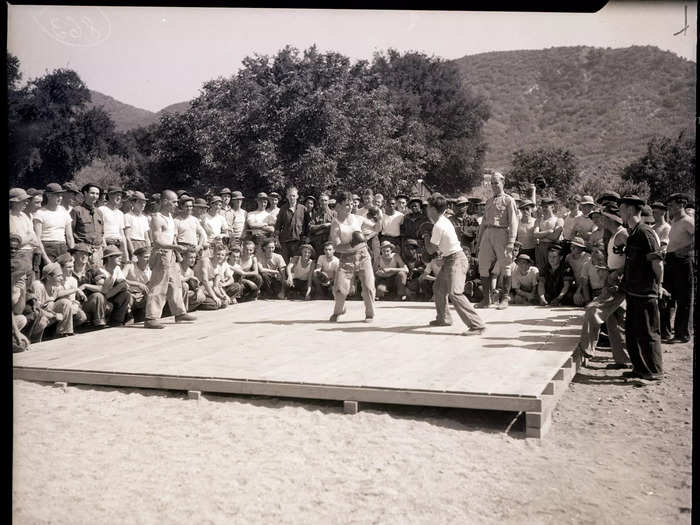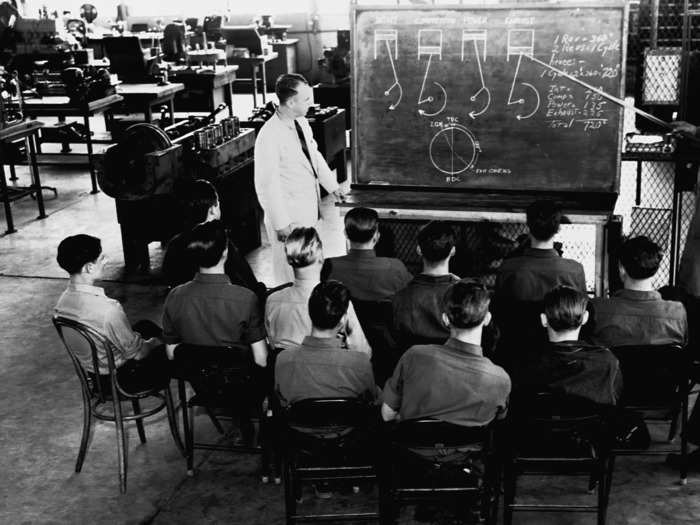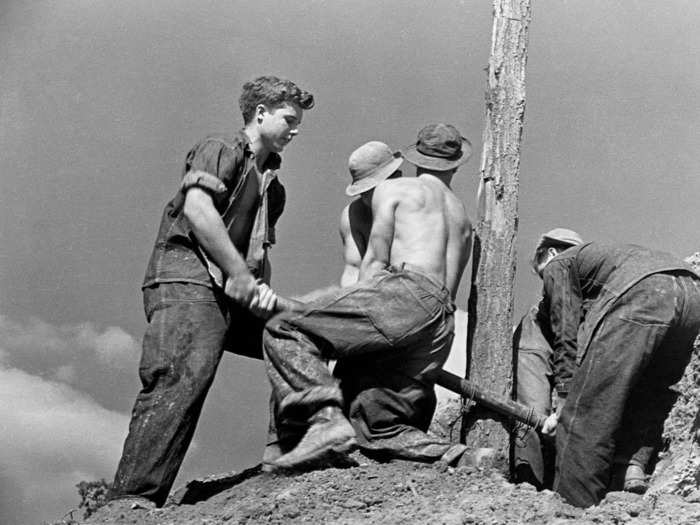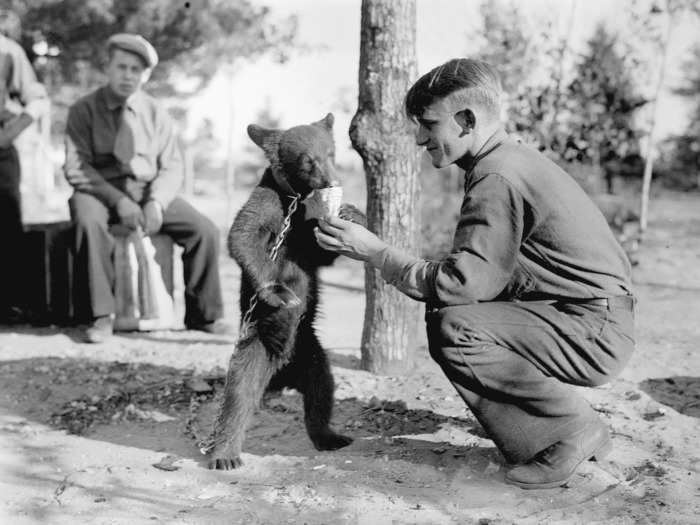Teenage laborers in the Civilian Conservation Corps sit in a tent after a day's workCORBIS/Corbis via Getty Images
- Biden launched the American Climate Corps to create jobs and address the climate crisis.
- The program is similar to the Civilian Conservation Corps, a Depression-era work relief plan by FDR.
President Joe Biden signed an executive order to create a "New Deal-style" American Climate Corps to bring down unemployment and increase conservation efforts in America's most vulnerable areas.
Modeled after President Franklin D. Roosevelt's 1933 Civilian Climate Corps, Biden's program aims to employ about 20,000 young adults. Employees of the program will build trails, plant trees, help install solar panels, and do other work to boost conservation and help prevent catastrophic wildfires.
When Roosevelt implanted the CCC, 24.9% of the workforce was unemployed. It was part of his effort to restart the economy in 100 days. Roosevelt signed the act into law on March 31, 1933, and promised to have 250,000 men employed by July 1.
To be a part of the new CCC, men had to be single, between 18 and 25, unemployed, and on relief rolls. Their wages were $30 a month, with $25 going back to their families so they could put it back into the economy.
Today, the unemployment rate is currently 3.8%, but the new plan aims to create employment opportunities that will help combat the climate crisis. The budget for the American Climate Corps is not immediately clear, but the original proposal was $10 billion before the proposal was removed from the climate bill.
In the nine-year span that the CCC was active, 2.5 million men joined and achieved historic conservation efforts. Take a look back into the camps of the Civilian Conservation Corps.
In 1933, then-President Franklin Roosevelt signed an act into law that would begin the Civilian Conservation Corps.
President Franklin D. Roosevelt Visiting a Civilian Conservation Corps Camp. Bettmann/Getty Images
The program was designed for a group of young men to live in national forests throughout the US and tend to their needs.
Eligible men had to be between 18 and 25, single, and would be selected from a pool of men on relief rolls.
A member of the CCC enjoys a meal with other members at a camp. PhotoQuest/Getty Images
PBS reported that men had to be "5 to 6.5 feet tall, over 107 lbs, and with at least six teeth" to qualify.
The Labor Department decided that homeless men would not be eligible. If the recruits had dependents back home to receive and spend allotment checks, they could better contribute to economic recovery.
At first, a majority of the men who were employed by the CCC were white.
A Black branch of the CCC at radio code practice. Library of Congress
Despite later establishing an amendment outlawing racial discrimination, there were still segregated camps since the Supreme Court did not consider segregation tantamount to discrimination.
Roosevelt would later sign an executive order to allow the employment of "12,000 reservation Indians" with no restrictions on age or marital status. When the CCC disbanded in 1942, it had employed over 88,000 Native Americans.
When Roosevelt signed the CCC into law on March 31, 1933, he promised the employment of 250,000 men by July 1 of the same year.
Men lean out the train window and wave as it leads them to a new life within the Civilian Conservation Corps. PhotoQuest/Getty Images
From mid-May to July 1, 9,000 men were being recruited per day to work with the CCC, and by July 1, the CCC had an estimated 275,000 workers.
A large group of young men enrolled in the Civilian Conservation Corps program. CORBIS/Corbis via Getty Images
The coordination of the CCC took the combined efforts of the Departments of Labor, War, Agriculture, and Interior.
A CCC camp in Olympic National Park, Washington. CORBIS/Corbis via Getty Images
The army played a significant role in the young men's housing, transportation, and training.
Despite their role in setting up the camps for recruits, the army's involvement in the CCC caused dissension. As time passed, CCC officials tried to reduce the army's role in the CCC.
The army provided tents, uniforms, rations, and even camp routines at the beginning of the CCC.
Young men transcribe Morse code messages on typewriters in a defense radio school. CORBIS/Corbis via Getty Images
The work mostly revolved around being stewards of the land they were living on.
A group portrait of CCC workers. CORBIS/Corbis via Getty Images
The Forest Service, part of the Agriculture Department, and the National Park Service supervised the conservation work in the field.
CCC employees earned $30 a month for their labor, equivalent to around $700 today. They were required to send $25 back home to their families, which equates to nearly $600 in 2023.
CCC employees helped build trails, cabins, and roads nationwide in more than 800 parks.
A CCC enrollee chips out a section of log for the new La Croix Guard Station. CORBIS/Corbis via Getty Images
The CCC also planted an estimated 3 billion trees by the end of the program.
Civilian Conservation Corps workers planting seedlings. Universal History Archive/Universal Images Group via Getty Images)
The aim was to plant trees to help mitigate extreme climate fluctuations, hold soil on slopes, retain moisture in the ground and aquifers, and control stream water flow.
"We got to see a change, not only in us, but also in the total environment, an improvement, not a deterioration, but a major improvement," said a CCC alumnus in a PBS documentary program, American Experience.
The camps also held recreational activities for the men.
A boxing match during recreation hour at one of the CCC camps. Bettmann/Getty Images
The men would work eight-hour shifts and have the rest of the day free.
Each camp supplied a dozen baseballs, six bats, ten gloves, basketballs, and four sets of eight-ounce boxing gloves. With their recreational equipment, the men would form teams and compete within their camps or among camps in close proximity.
As the camps grew, appeals went out to local communities near the camps for donations, and shipments of recreational equipment, like baseballs, basketballs, and football equipment, came flooding in.
Educational opportunities were also available to CCC employees.
Civilian Conservation Corps (CCC) enrollees are instructed in mechanical theory. CORBIS/Corbis via Getty Images
Many of the men who joined finished their high school education during their tenure in the program.
Amongst the men who were able to finish their high school education with the CCC, there were 57,000 illiterate men who learned to read and write.
Roosevelt believed that bringing an army of the unemployed into "healthful surroundings" would help eliminate the threats of "enforced idleness."
Boys working for the Civilian Conservation Corps. CORBIS/Corbis via Getty Images
By the end of the CCC in 1942, 2.5 million men had served in more than 4,500 camps across the country.
A man feeds ice cream to the adopted mascot of the CCC. CORBIS/Corbis via Getty Images
In the nine-year span the CCC was active, the men planted 3 billion trees, combated soil erosion and forest fires, and occasionally dealt with natural disasters such as hurricanes, floods, and droughts.

